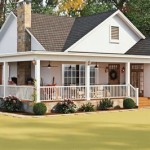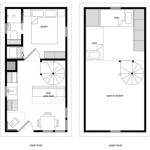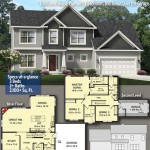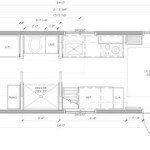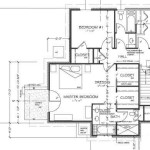House Plans: Mountain Styles
In the realm of residential architecture, mountain-style homes offer a distinct aesthetic that seamlessly blends with the natural beauty of their surroundings. Characterized by their rustic charm, robust construction, and cozy interiors, these dwellings evoke a sense of tranquility and connection to the outdoors. From the towering peaks of the Rockies to the rolling hills of Appalachia, mountain-style homes have become synonymous with a lifestyle that embraces nature’s grandeur.
Designing and building a mountain-style home requires attentive consideration of various factors, including the site’s topography, climate, and the homeowner’s lifestyle preferences. Understanding the key elements that define this architectural style is crucial for capturing its essence and creating a dwelling that perfectly complements its environment.
Key Elements of Mountain House Plans
Mountain-style homes are distinguished by a collection of architectural features that contribute to their distinctive appeal. These elements not only enhance the aesthetics of the home but also serve practical purposes, adapting the dwelling to the unique challenges of a mountain environment.
1. Rustic Materials and Finishes
Natural materials are at the forefront of mountain-style architecture. Stone, wood, and metal are frequently used in both exterior and interior design. Stone foundations and accents lend a sense of permanence and stability, while wood beams and siding create a warm and inviting atmosphere. Exposed timber accents on the ceiling and walls add a rustic touch, while metal roofing and accents provide durability and a rugged aesthetic.
2. Steep Roofs and Gable Ends
Mountain-style homes often feature steep roofs with prominent gable ends. This design element serves several purposes. It allows snow and rain to shed easily, preventing accumulations that can cause damage. The gables also provide additional living space in the form of dormers, allowing for more natural light and ventilation within the home. Additionally, the steep roofs and gables create a visually appealing silhouette that blends seamlessly with the mountainous landscape.
3. Large Windows and Expansive Views
One of the defining characteristics of mountain-style homes is their emphasis on maximizing natural light and capturing breathtaking views. Large windows are frequently incorporated throughout the home, allowing residents to immerse themselves in the beauty of their surroundings. Picture windows, bay windows, and French doors are common features that seamlessly blend the interior and exterior spaces. Carefully placed windows strategically frame stunning views, enhancing the connection between the home and its natural environment.
4. Open Floor Plans and Cozy Interiors
Mountain-style homes often adopt open floor plans, allowing for a free-flowing connection between living areas. This design element creates a sense of spaciousness and promotes a sense of community within the home. Cozy nooks and fireplaces provide intimate gathering spots, while large kitchens with ample seating encourage social engagement. Rustic furniture, warm lighting, and natural textures contribute to the overall feeling of comfort and relaxation, making mountain homes ideal for both everyday living and entertaining guests.
5. Porches & Decks
Mountain homes often incorporate spacious porches and decks that extend the living space outdoors. These features provide an ideal spot for enjoying the fresh mountain air, taking in panoramic views, and relaxing amidst the tranquility of nature. Porches and decks are typically constructed from wood or stone, complementing the home's exterior materials and providing a seamless transition between the interior and the surrounding landscape.
6. Sustainable Considerations
In recent years, there has been a growing emphasis on sustainable building practices in mountain-style homes. Energy-efficient design features, such as solar panels, geothermal heating, and rainwater harvesting systems, are becoming increasingly prevalent. These features not only minimize the environmental impact of the home but also contribute to cost savings and a more self-sufficient lifestyle. Choosing locally sourced materials and incorporating green building techniques are becoming increasingly important to homeowners who want to live in harmony with the natural environment.
Mountain-style homes offer a unique blend of aesthetic appeal, practical functionality, and a strong connection to nature. By incorporating the key elements of this architectural style, homeowners can create dwellings that are both beautiful and sustainable, capturing the essence of the mountain lifestyle.

Mountain House Plans Style Home Designs

Why Building A Mountain House Plan Is Great For Your Family Dfd Plans Blog

Timber Frame Mountain Plans Style Floor

Beautiful Craftsman Style Mountain House Plan 7450 Blowing Rock

Mountain House Plans By Max Fulbright Designs

Featured Style Mountain And Rustic House Plans America S Best Blog

Mountain Style Homes Riverbend Custom Timber Frame

Plan 23610jd High End Mountain House With Bunkroom Craftsman Plans New

3 Story Open Mountain House Floor Plan Asheville

Mountain Modern Homes Plans Ideas Designs Abhp America S Best House Blog
Related Posts


